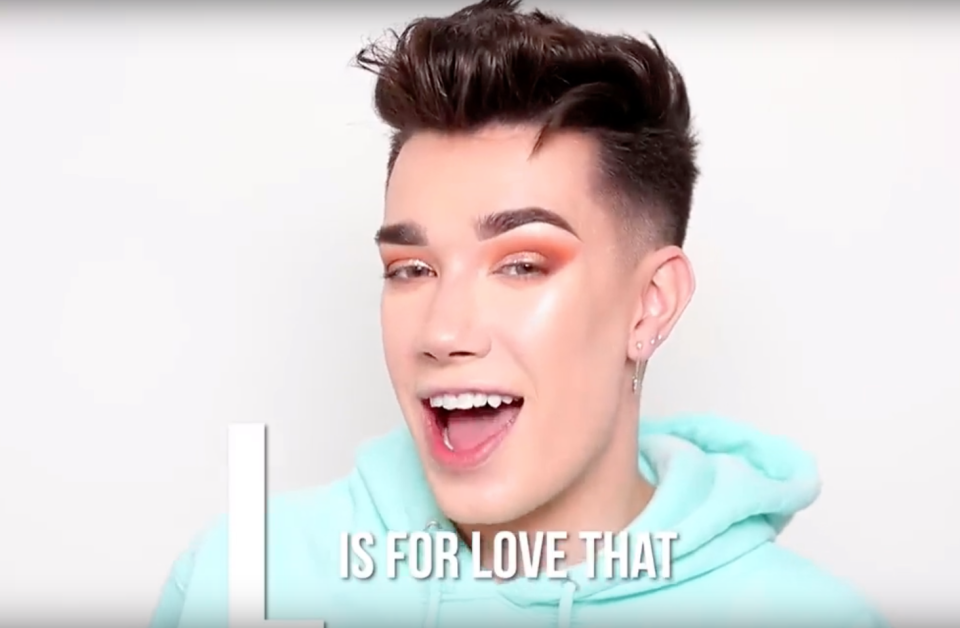Why Is Everyone Saying “I Love That for You”?
It’s hard to pinpoint the exact moment when a phrase achieves meme status, but it seems to be happening more than ever. From “I’m baby” to “You hate to see it,” expressions that first gained currency in the shadowy depths of Twitter and Instagram often go mainstream, but it can be tricky to trace the precise etymology that takes, say, “Weird flex, but okay” from extremely online slang to all-purpose catchphrase.
The expression “I love that for you” and its variants (“I love that for me/us/them”) has picked up steam of late. If you’re a culture vulture, you might suspect that its origins could partly be traced back to The Bachelor’s Arie Luyendyk Jr., a living manifestation of compulsory heterosexuality who exclaimed “I love that” in 2018 enough to merit a three-minute compilation video. It’s now become a widely used phrase within queer communities, appearing even as the title of an LGBTQ+ lifestyle blog.
Gretchen McCulloch, internet linguist and author of the best-selling book Because Internet: Understanding the New Rules of Language, took to the Google Ngram Viewer—which tracks phraseology usage dating back to 1500—to search for possible linguistic predecessors to “I love that for you.” What she found wasn’t entirely surprising: “There are no results for the full phrase ‘Love that for you’ until 2008, so it seems like its origins are more recent,” she tells Vogue.
So how did “I love that for you” gain traction in the first place? The answer is complicated, and—like so many things in our current dystopia—at least partly YouTube-related.
“Like many queer cultural artifacts, ‘I love that for you’ comes from teens, and we’ve picked it up,” Rose Dommu, a senior staff writer at Out, who employed the phrase in a February interview, tells Vogue. Dommu attributes “I love that for you” to beauty guru James Charles, while cautioning that Charles is the equivalent of “a human retweet.”
Charles made headlines in May for his gummy-supplement feud with fellow YouTuber Tati Westbrook, but to his ardent, primarily teenage fan base, he’s been a star for years. At his zenith, Charles boasted 16 million YouTube subscribers who flocked to his DIY makeup tutorials like moths to a perfectly contoured flame, and he quickly parlayed that success into branded partnerships, Met gala invitations, and even a CoverGirl contract.
Before the feud, Charles won fans not only with his impeccable makeup skills, but also his taxonomy of catchphrases. In a March video titled “Learn the sister dictionary with James Charles,” Charles broke down the bon mots he’d become famous for on YouTube in alphabetical order: H was for “Hi, sisters” (used to open up every vlog); N was for “Not with that attitude”; and L, of course, was for “Love that.”

“‘Love that’ can be expanded to ‘Love that for you’ or ‘Love that for me,’” Charles explains in his always-upbeat tone. The shortened version of the phrase has made its way onto official James Charles merchandise, and like any good neologism, it even commands its own UrbanDictionary page. “Kind of like ‘love that,’ but generally means that you don’t actually care,” one user reports, making sure to hashtag #JamesCharles.
“I love that for [X]” has spread from Charles throughout the YouTuber community; it can be sincere praise of a friend’s outfit choice, or it can be used as a heightened form of “LOL” to express bemusement at the uncanny, like Tana Mongeau tweeting “I love that for us” when she and one of her followers tweeted the same joke about Donald Trump and Kim Kardashian’s May 2018 meeting. It’s a pet phrase of Mongeau’s; in fact, if you’re so inclined, you can even watch her saying it for two minutes on a loop.
Just as Charles has moved from star to scandal-maker, the phrase “love that for you” has curdled from earnest to sarcastic; this shift is evidenced by an October Reductress headline reading, “Knock Your Proud Friend Down a Peg or Two by Declaring, ‘I Love That for You!’” In its sarcastic form, “I love that for you” is a prime example of what writer Myriam Gurba calls “the queer art of being mean,” but it’s an inherently versatile phrase, one that’s as easy to employ sincerely as it is to toss off as an insult.
At its heart, “I love that for you” is a queer internet catchphrase with with real-world legs; like other online slang that has made its way IRL, it’s a signifier of someone who “gets it.” That is, for now, anyway; the chances are good that the phrase could go mainstream, emblazoned across water bottles and workout tanks the world over. Dommu notes how quickly the phrase has spread beyond Charles: “I hear people saying it now who would never watch his videos.” These days, when she catches herself saying “I love that for you” on the podcast she hosts, Out’s Outcast, she edits it out. “I can see some very non-gay brand marketing with it,” she predicts. “In five years, someone will be using ‘I love that for you’ to sell a sandwich.”
The thing that makes “I love that for you” great, though, is not its mainstream potential, but its versatility. How often can a phrase go from a genuine expression of loving support (as in, “The thing you’re doing will benefit you, friend”) to a subtle act of shade (“The thing you’re doing is tragically misguided, but I’m not going to say so”) with a simple change of intonation? “I love that for you” functions as a cultural bridge between millennial irony and Gen-Z sincerity—allowing everyone to take what they need and leave the rest.
Originally Appeared on Vogue

